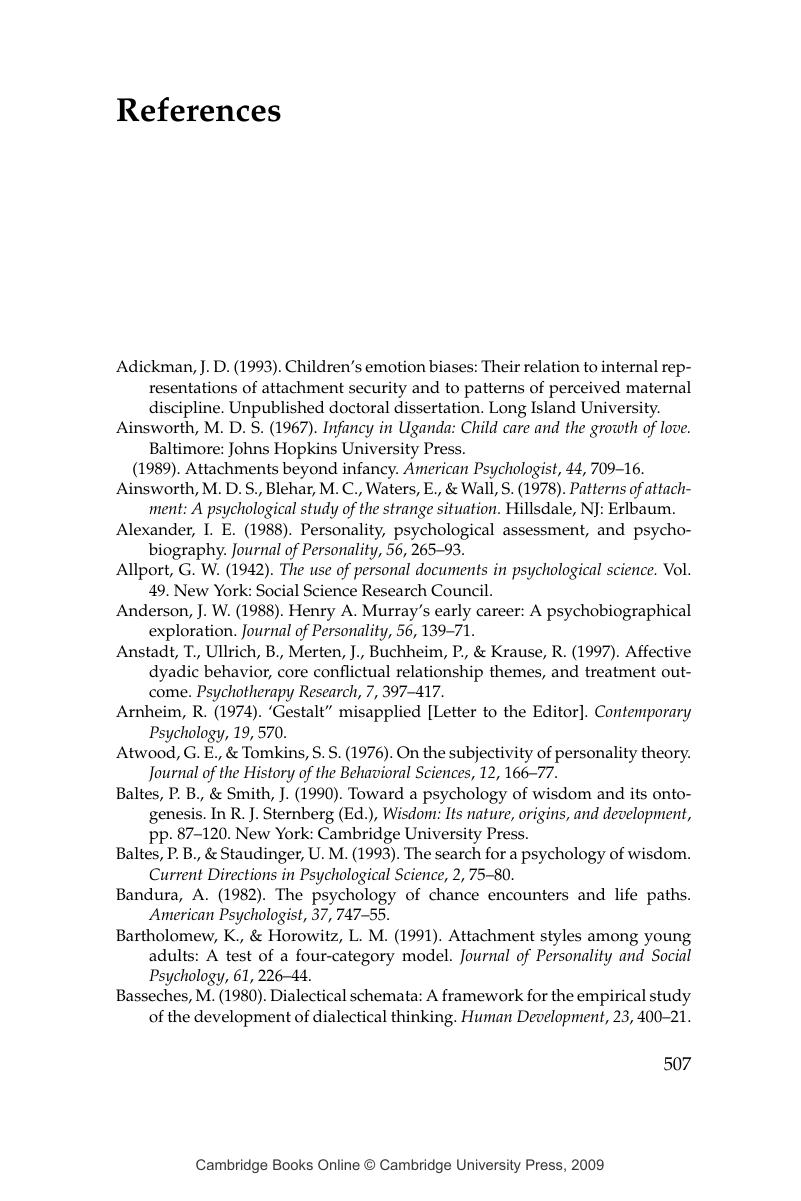Book contents
- Frontmatter
- Contents
- Preface
- Part I Introduction
- Part II Emotion as the Integrative Link in Social and Personality Development
- Part III Emotion as the Link in Intellectual Work
- Part IV Emotion as the Link in Therapeutic Behavior
- Part V Presenting a New View
- Appendix
- References
- Subject Index
- Author Index
- Cambridge Cultural Social Studies
- References
References
Published online by Cambridge University Press: 25 June 2009
- Frontmatter
- Contents
- Preface
- Part I Introduction
- Part II Emotion as the Integrative Link in Social and Personality Development
- Part III Emotion as the Link in Intellectual Work
- Part IV Emotion as the Link in Therapeutic Behavior
- Part V Presenting a New View
- Appendix
- References
- Subject Index
- Author Index
- Cambridge Cultural Social Studies
- References
Summary

- Type
- Chapter
- Information
- The Hidden Genius of EmotionLifespan Transformations of Personality, pp. 507 - 520Publisher: Cambridge University PressPrint publication year: 2002



